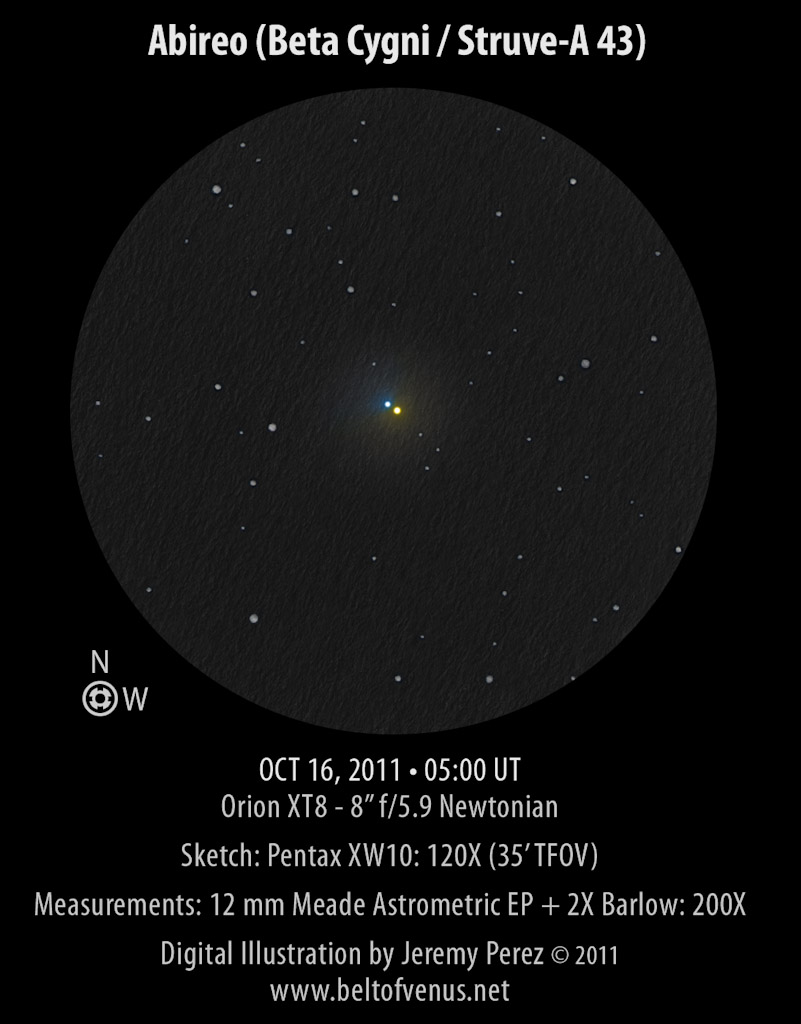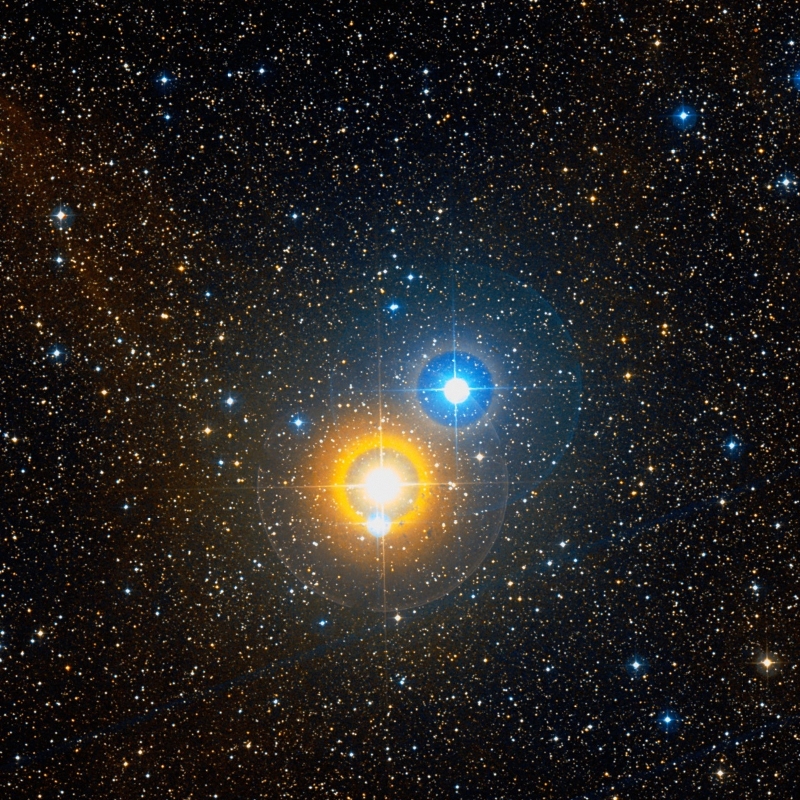As for the visible blue companion, it, too, is rather pale as blue stars go. It has a B-V color index of -0.095. That's blue, but not strikingly so. To me, therefore, Albireo is a double star consisting of a pale yellow primary and a pale blue secondary, and to me this means that Albireo isn't so great!
No, my own favorite color contrast pair - or rather, triple - is 30 and 31 Cygni. 31 Cygni is a star of spectral class K2II. This star, too, appears to have a hot unresolved spectroscopic companion, but even so, its B-V index is redder than the B-V index of the primary of Albireo: +1.270 for 31 Cygni versus +1.08 for Albireo.
However, 31 Cygni has a visible companion too, and this star is bluer than the blue component of Albireo: -0.133 versus -0.095 for Albireo.The color contrast is simply more impressive here than for Albireo!
Fascinatingly, 30 Cygni, a star of spectral class A5, is located close to the 31 Cygni pair. It can be seen in the same telescope field. The B-V index of 30 Cygni is +0.100, which means that it is not just bluer than the red component of 31 Cygni, but it is also visibly "paler" or "less blue" than the blue component of 31 Cygni! How fascinating!
Palomar Observatory/STScI/WikiSky
Ann


